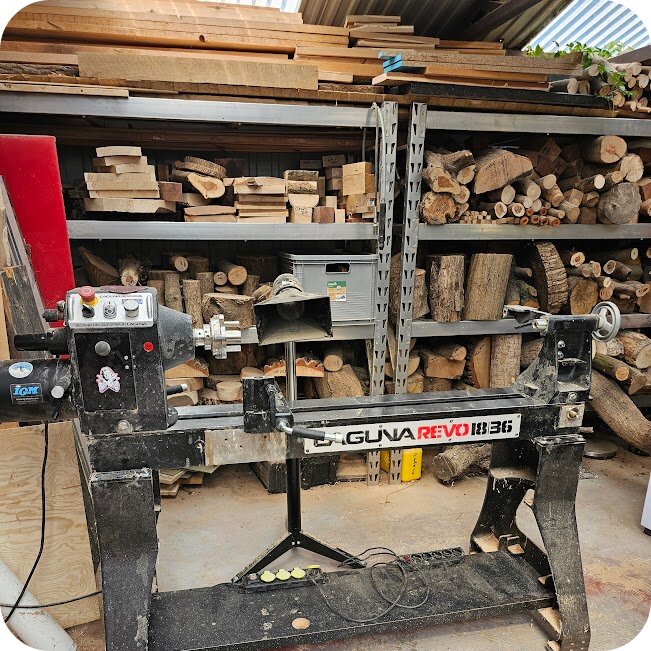Europe is home to a wide variety of timbers used in construction, furniture-making, and crafts. For woodturners, some species are far more suitable than others — with differences in grain, hardness, and workability that affect everything from shaping to finishing.
Here’s a breakdown of ten of the most common European woods, including their basic properties and how well they perform in woodturning.
1. Oak (Quercus robur, Quercus petraea)
A dense, durable hardwood with a strong grain and excellent resistance to wear and decay.
Woodturning suitability: Good, but the open grain and tendency to splinter can be challenging. Best used for larger pieces or when the bold grain is a design feature.
2. Scots Pine (Pinus sylvestris)
A widely available softwood, light in weight and easy to work with. Common in structural uses and furniture.
Woodturning suitability: Fair. Soft grain and resin pockets can tear out during turning. Often used for practice or rustic pieces.
3. Norway Spruce (Picea abies)
A fast-growing softwood used heavily in construction and paper production.
Woodturning suitability: Poor. Too soft and fibrous for fine detail or smooth finishes. Not typically used for turned objects.
4. Beech (Fagus sylvatica)
A pale, fine-grained hardwood with excellent strength and uniform texture.
Woodturning suitability: Excellent. Stable and smooth to cut, it’s perfect for bowls, tool handles, and functional items.
5. Birch (Betula pendula, Betula pubescens)
Light in color with a close, even grain. Strong yet workable, birch is common in plywood and joinery.
Woodturning suitability: Very good. Turns cleanly with little tear-out and finishes to a soft, attractive sheen.
6. Ash (Fraxinus excelsior)
A resilient, elastic hardwood with light color and strong, visible grain.
Woodturning suitability: Excellent. Offers great control, holds fine detail, and is ideal for both functional and artistic forms.
7. Alder (Alnus glutinosa)
A lightweight hardwood with a reddish tone and smooth grain.
Woodturning suitability: Good. Easy to work with and forgiving, though slightly soft and not very durable. Great for beginners and smaller decorative items.
8. Chestnut (Castanea sativa)
A close relative of oak, chestnut is lighter and splits less easily, with a softer texture and less prominent grain.
Woodturning suitability: Good. Turns more easily than oak and gives a pleasant, natural finish. May be slightly porous depending on age and drying.
9. Walnut (Juglans regia – European Walnut)
A richly colored hardwood known for its dark, smooth grain and elegance in fine furniture.
Woodturning suitability: Excellent. Turns smoothly, holds crisp detail, and finishes beautifully — ideal for statement pieces and fine decorative work.
10. Maple (Acer pseudoplatanus – Sycamore Maple)
A pale, dense, and stable hardwood with a uniform grain and excellent strength.
Woodturning suitability: Excellent. Tight grain allows for precise, clean cutting. Often used for bowls, tools, and high-end turned items.
Summary
For woodturning, not all common woods are equal. Hardwoods like ash, beech, walnut, and maple are prized for their consistency and beauty, while softwoods such as spruce and pine are more limited in application. Understanding how each species behaves on the lathe helps you choose the right timber for your design — whether you’re after elegance, durability, or ease of shaping. So if you are wondering why wood turned pieces tend to be expensive, well, one reason is we have to use hardwoods for good results and hardwood is no longer a commodity.
